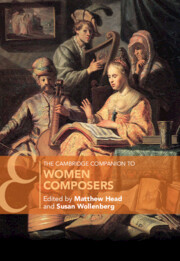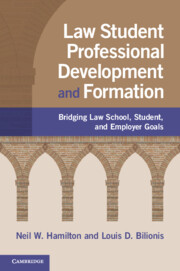82 results

The Cambridge Companion to Women Composers
-
- Published online:
- 23 May 2024
- Print publication:
- 30 May 2024
Bioethics: No Method—No Discipline?
-
- Journal:
- Cambridge Quarterly of Healthcare Ethics , First View
- Published online by Cambridge University Press:
- 22 March 2024, pp. 1-10
-
- Article
-
- You have access
- Open access
- HTML
- Export citation
Do Physicians Have a Duty to Support Secondary Use of Clinical Data in Biomedical Research? An Inquiry into the Professional Ethics of Physicians
-
- Journal:
- Journal of Law, Medicine & Ethics / Volume 52 / Issue 1 / Spring 2024
- Published online by Cambridge University Press:
- 31 May 2024, pp. 101-117
- Print publication:
- Spring 2024
-
- Article
-
- You have access
- Open access
- HTML
- Export citation
1 - Introduction
-
- Book:
- Black Soldiers in the Rhodesian Army
- Published online:
- 01 February 2024
- Print publication:
- 08 February 2024, pp 1-50
-
- Chapter
- Export citation
Conclusion
-
- Book:
- Black Soldiers in the Rhodesian Army
- Published online:
- 01 February 2024
- Print publication:
- 08 February 2024, pp 249-259
-
- Chapter
- Export citation
3 - ‘The Rhodesian Army Was the Best in Everything’
-
- Book:
- Black Soldiers in the Rhodesian Army
- Published online:
- 01 February 2024
- Print publication:
- 08 February 2024, pp 86-109
-
- Chapter
- Export citation
8 - History, Practices, Challenges and Opportunities of Urban Planning in Zimbabwe
- from Part II - Case Studies on Urban Planning in African Countries
-
-
- Book:
- Reimagining Urban Planning in Africa
- Published online:
- 07 December 2023
- Print publication:
- 21 December 2023, pp 131-142
-
- Chapter
- Export citation
Assessing professionalism in mental health clinicians: development and validation of a situational judgement test
-
- Journal:
- BJPsych Open / Volume 9 / Issue 6 / November 2023
- Published online by Cambridge University Press:
- 13 November 2023, e213
-
- Article
-
- You have access
- Open access
- HTML
- Export citation
Chapter 2 - The Legal and Ethical Status of Social Media
- from Section 1 - Understanding Social Media
-
-
- Book:
- Social Media and Mental Health
- Published online:
- 11 October 2023
- Print publication:
- 12 October 2023, pp 12-22
-
- Chapter
- Export citation
Against Intelligence: Rethinking Criteria for Medical School Admissions
-
- Journal:
- Cambridge Quarterly of Healthcare Ethics , First View
- Published online by Cambridge University Press:
- 28 February 2023, pp. 1-6
-
- Article
- Export citation
8 - The Morality of Competence
-
- Book:
- The Good Chinese Lawyer
- Published online:
- 24 March 2023
- Print publication:
- 19 January 2023, pp 254-275
-
- Chapter
- Export citation
3 - Professionalism and the regulation of lawyers’ ethics
-
- Book:
- Parker and Evans's Inside Lawyers' Ethics
- Published online:
- 05 January 2023
- Print publication:
- 10 January 2023, pp 57-98
-
- Chapter
- Export citation
Chapter 3 - Healthcare Ethics and Professional Regulation in Operating Department Practice
-
-
- Book:
- Fundamentals of Operating Department Practice
- Published online:
- 18 August 2022
- Print publication:
- 08 September 2022, pp 15-27
-
- Chapter
- Export citation
‘Mediators mediating themselves’: tensions within the family mediator profession
-
- Journal:
- Legal Studies / Volume 43 / Issue 1 / March 2023
- Published online by Cambridge University Press:
- 26 August 2022, pp. 139-158
- Print publication:
- March 2023
-
- Article
-
- You have access
- Open access
- HTML
- Export citation
BLACKBALLING BUCKLER: THE LETTERS OF JOHN BUCKLER (1770–1851), THE CARTER SCHOOL AND THE FOUNDATIONS OF AN ANTIQUARIAN DYNASTY
-
- Journal:
- The Antiquaries Journal / Volume 102 / September 2022
- Published online by Cambridge University Press:
- 29 June 2022, pp. 418-446
- Print publication:
- September 2022
-
- Article
- Export citation
5 - When Worlds Collide
-
- Book:
- Dramas of Dignity
- Published online:
- 26 May 2022
- Print publication:
- 09 June 2022, pp 102-126
-
- Chapter
- Export citation
1 - Introduction
-
- Book:
- Law Student Professional Development and Formation
- Published online:
- 21 April 2022
- Print publication:
- 05 May 2022, pp 1-27
-
- Chapter
-
- You have access
- Open access
- HTML
- Export citation
January 1993: The Founding of Education International
-
- Journal:
- History of Education Quarterly / Volume 62 / Issue 2 / May 2022
- Published online by Cambridge University Press:
- 28 April 2022, pp. 211-230
- Print publication:
- May 2022
-
- Article
-
- You have access
- Open access
- HTML
- Export citation

Law Student Professional Development and Formation
- Bridging Law School, Student, and Employer Goals
-
- Published online:
- 21 April 2022
- Print publication:
- 05 May 2022
-
- Book
-
- You have access
- Open access
- Export citation
Of Judge Quota and Judicial Autonomy: An Enduring Professionalization Project in China
-
- Journal:
- The China Quarterly / Volume 251 / September 2022
- Published online by Cambridge University Press:
- 24 March 2022, pp. 866-887
- Print publication:
- September 2022
-
- Article
- Export citation



